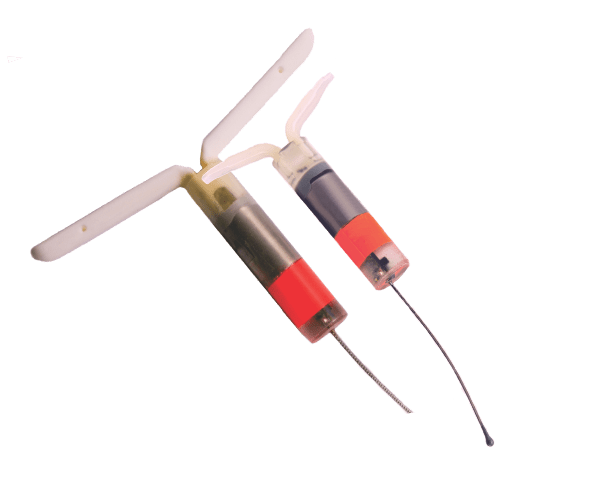© Lars Haugaard, Aarhus University, Denmark
Vaginal Implant (VIT)
All Wildlife Products
A VIT is used to observe the pregnancy and parturition of a GPS-collared female ungulate. It provides the researcher with information on the date and location of the calving site as well as physiological data throughout gestation. This involves assessing whether a VIT is in situ or expelled by analyzing temperature and motion data. Statuses are transmitted to the dam’s VERTEX Plus collar that will then initiate alert notifications for the birthing event or separation.
We offer our VITs with S, M and L wings for use with various sized species.

Vaginal Implant (VIT)
Birth detection: Once the VIT is no longer in situ, two things are to be expected: the ambient temperature of the VIT drops, and no further motion is detected. When this happens, the VIT changes its status to Expelled and the paired VERTEX Plus collar will respond to it by conducting an unscheduled GPS fix and notifying the researcher via an alert message (remote communication provided).
Separation: The VIT continuously transmits its ID to the dam’s VERTEX Plus collar via UHF. When the dam moves away from the calving site, this ID is no longer received. If it remains absent for longer than one hour, the collar sends a No Contact Alert, i.e. the separation message, to the researcher.
Localisation: To help locate the calving site in the field, the VIT is equipped with a VHF beacon transmitter that can be programmed as flexible as the beacon of a GPS collar.
Applications
- Reproduction: Find the calving site and observe it almost immediately after parturition. How long does the mother stay nearby?
- Reproduction 2: Collar the offspring to observe calf/dam behavior and offspring development.
Vaginal Implant Transmitter (VIT)
under revision
